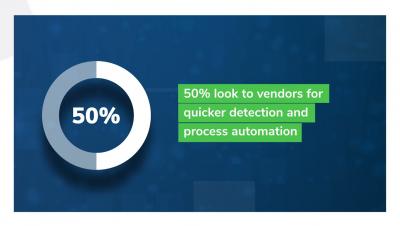Security | Threat Detection | Cyberattacks | DevSecOps | Compliance
Incident Response
What Is a Cybersecurity Incident Response Plan?
Handling an incident in LimaCharlie: best practices, capabilities, tips & tricks
Elevating What a TIP Can Be - The ThreatQ Platform
In a previous blog I reviewed the foundational use case for a TIP, which is threat intelligence management—the practice of aggregating, analyzing, enriching and de-duplicating internal and external threat data in order to understand threats to your environment and share that data with a range of systems and users. However, one of the unique benefits of the ThreatQ Platform and where organizations are deriving additional business value, is that it also allows you to address other use cases.
Arctic Wolf Cloud Detection and Response
Incident Response Plan vs. Disaster Recovery Plan
When developing business continuity plans, businesses should understand that they actually need two documents: an incident response plan and a disaster recovery plan. Having an incident response plan means your organization is prepared for possible information security incidents such as a data breach, a system outage, or a security breach.
Cyber Security Incident Response Plan - How to Create One?
Cyberattack is one of the common threats that modern businesses are facing today. Despite the growing threat landscape of cybersecurity attacks, many small and medium companies that experience data breaches and threats do not have adequate preparations. This includes prevention measures before the attack and incident response plans during/after the attack.
SANS Report Reveals Significant Growth in Automation: Maximize Your Investments
The SANS 2021 Automation and Integration Survey is now available for download, focusing on the question: First we walked, now we run – but should we? Let’s face it, we’ve talked about security automation for years. We’ve grappled with what, when and how to automate. We’ve debated the human vs machine topic.










